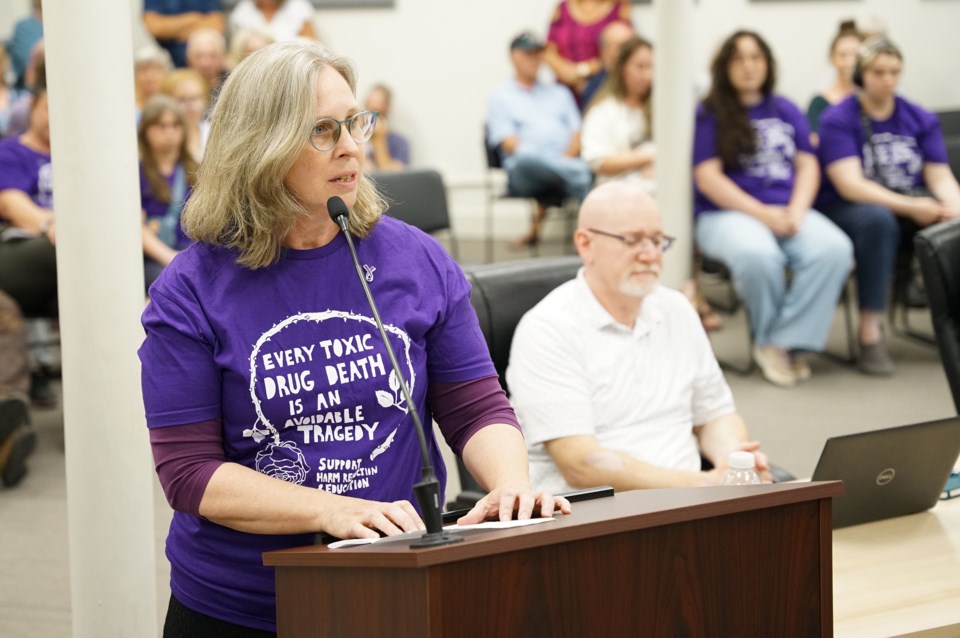City of Powell River Council received an update on the toxic drug crisis and the community’s responses to it.
At the August 21 council meeting, Jessica Colasanto, manager of community resources at Lift Community Services, appeared as a delegation, outlining that as part of her role, she facilitates the qathet Community Action Team team (CAT).
“The CAT has been serving this community since 2019, although we were convening even before that,” said Colasanto. “We are made up of representatives from Vancouver Coastal Health, Tla’amin Health, first responders, local government elected officials, the nonprofit sector, local business, and most importantly, our peers – people with lived and living experience of substance use.
“Our goal is to provide focused, action-oriented strategies, tailored to local community substance use needs. We are also very fortunate to have an active youth CAT, represented tonight by Naomi Harrison.”
Colasanto said she was appearing before council to raise awareness about substance use overdoses, and to honour the lives of those who have lost their lives to this toxic drug supply. She said she knows people’s eyes glaze over when statistics are spoken about, but between 2016 and 2024, this community had 936 overdoses, as reported by BC Emergency Health Services, and 85 overdose deaths, as reported by the coroner.
“We know from these statistics collected that using alone drastically increases the risk of dying,” said Colasanto. “We also know, from looking at province-wide statistics, that our overdose prevention site, along with other community supports, such as complex care housing, dramatically improve people’s chances of surviving an overdose and connecting to recovery. The number of overdose calls paramedics have responded to has been declining since 2022 in our area. Overdose deaths here have been trending downward since its peak in 2021.
“That’s encouraging, but it’s not enough. We say that stigma kills because stigma creates a barrier for people to access lifesaving services. These deaths are completely preventable and now is not the time to slow down on our concentrated, collaborative efforts.”
Harrison said in 2017, her brother Anton died alone in his room from fentanyl poisoning.
“He was an artist like me, and he liked to write and play music,” said Harrison. “His death could have been prevented if he had access to better, clean and safe drugs, and if there had been less stigma around people who use drugs. Anton, like many others, never got the option to go into treatment because he died before he could have the chance.
“If you believe in funding treatment, please note that you must also fund resources like the overdose prevention site, drug checking, naloxone training, opioid agonist therapy and a safer drug supply, because otherwise, there will be no one left to go into treatment. We’ll have already lost our valuable friends and family members to this toxic drug crisis.”
Colasanto said in conclusion, as International Overdose Awareness Day is approaching on August 31, everyone is asked to join in remembering those who have been lost. She then asked for a moment of silence.
Councillor Cindy Elliott thanked Colasanto for coming to the city council meeting and speaking the truth to the community.
Last year, Meta censored Canadian news from its feeds, so we built our own social platform: syrupsocial.com – a newsfeed powered by Canadian journalists. Join the Peak on Syrup for the latest news from the Sunshine Coast and beyond, and add the Peak's email list for the top headlines right in your inbox Monday to Friday.



